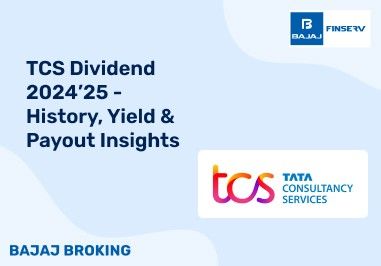Example of Iron Butterfly Strategy
Consider a trader who expects a stock to remain relatively stable in the upcoming weeks. Suppose the stock is currently priced at ₹500, and the trader sets up an Iron Butterfly strategy with the following options:
By executing this strategy, the trader collects a net credit upfront from the sale of the ATM options. If the stock remains close to ₹500 until expiration, the short options expire worthless, and the trader keeps the premium received. However, if the stock price moves beyond ₹520 or drops below ₹480, the purchased options limit potential losses. The trade reaches maximum profit when the stock closes exactly at ₹500 on expiration day.
How an Iron Butterfly Works
The Iron Butterfly strategy enables traders to capitalize on stable market conditions by using a structured options approach. The strategy involves selling a call and a put option that are at-the-money (ATM), while at the same time, buying a call and a put option that are out-of-the-money (OTM) with different strike prices. This creates a balanced position with predefined risk and reward.
The strategy works best when the underlying asset stays near the central strike price, causing the sold options to expire worthless. If the asset moves beyond the expected range, the purchased options serve as protection. This setup helps traders manage risk while benefiting from low volatility conditions. It is widely used by experienced options traders.
How to Use the Iron Butterfly
The Iron Butterfly Strategy is ideal for traders expecting low market volatility and a stable price range for the underlying asset. To implement this butterfly strategy, select an underlying asset and its expiration date. Sell an at-the-money call and put option to collect premiums, while buying an out-of-the-money call and put options as protection against extreme price movements. This setup creates a defined profit zone, where gains are maximised if the price remains near the strike price of the sold options. The iron fly strategy provides limited risk and rewards, making it an effective choice for range-bound markets. In India, the premiums collected and potential profits are calculated in ₹, offering traders a clear risk-reward picture.
Types of Butterfly Option Strategy
The butterfly trading strategy has multiple variations, including the Iron Butterfly Strategy, Reverse Iron Butterfly Spread, Long Call Butterfly Spread, Long Put Butterfly Spread, Short Call Butterfly Spread, and Short Put Butterfly Spread.
Long Call Butterfly Spread
- Definition: Combines buying one in-the-money call, selling two at-the-money calls, and buying one out-of-the-money call.
- Objective: Profits if the underlying price remains near the middle strike price at expiration.
- Best Use: For low volatility markets where a stock is expected to stay near a specific level.
- Example: ₹1,000 strike price, ₹1,050 middle strike, and ₹1,100 call.
Long Put Butterfly Spread
- Definition: Involves buying one in-the-money put, selling two at-the-money puts, and buying one out-of-the-money put.
- Objective: Gains from price stability, specifically when the stock price is near the middle strike.
- Best Use: Effective in downward-moving markets with limited volatility.
- Example: ₹900 in-the-money, ₹950 at-the-money, and ₹1,000 out-of-the-money puts.
Short Call Butterfly Spread
- Definition: Sells one in-the-money call, buys two at-the-money calls, and sells one out-of-the-money call.
- Objective: Profits from high volatility when the price moves significantly beyond the outer strikes.
- Best Use: Ideal for high volatility stocks.
- Example: ₹1,200 strike price, ₹1,250 middle strike, and ₹1,300 out-of-the-money call.
Short Put Butterfly Spread
- Definition: Sells one in-the-money put, buys two at-the-money puts, and sells one out-of-the-money put.
- Objective: Gains from a wide range of price movements, especially downward volatility.
- Best Use: Suitable for volatile bearish markets.
- Example: ₹800 in-the-money, ₹850 at-the-money, and ₹900 out-of-the-money put.
Iron Butterfly Options Strategy
- Definition: Combines selling an at-the-money call and put while buying out-of-the-money call and put options.
- Objective: Profits when the underlying stock price stays within the range defined by the sold options.
- Risk/Reward: Limited risk and capped profit potential.
- Example: ₹1,000 at-the-money and ₹900/₹1,100 out-of-the-money strikes.
Reverse Iron Butterfly Spread
- Definition: Involves buying an at-the-money call and put while selling out-of-the-money call and put options.
- Objective: Gains from increased volatility, benefiting when the price moves significantly away from the middle strike.
- Best Use: Ideal for volatile markets with sharp price movements.
- Example: ₹950 at-the-money call/put and ₹900/₹1,000 out-of-the-money strikes.
Who Should Use The Iron Butterfly Strategy
The Iron Butterfly options strategy is best suited for traders and investors with a specific set of expectations and risk tolerance. Here are some considerations for those who should use the Iron Fly strategy:
Low Volatility Expectations: This strategy is ideal for those who anticipate a period of low volatility in the underlying asset. It’s designed to profit from minimal price movement.
Income Generation: Traders looking to generate income in a low-volatility market can use the Iron Butterfly to collect premiums from selling options.
Neutral Outlook: If you have a neutral or non-directional view of the underlying asset and believe it will stay within a specific price range, the Iron Butterfly can be a suitable strategy.
Limited Risk Tolerance: The Iron fly has limited risk because the maximum loss is defined, making it attractive for risk-averse traders. However, potential profits are also limited.
Options Experience: Traders with experience in options strategies and an understanding of how options work may find the Iron Fly strategy more suitable. It involves both call and put options, which require a good grasp of options trading principles.
Hedging Existing Positions: It can be used as a hedging strategy to protect an existing position. If you have an open position and want to limit potential losses within a specific range, an Iron fly can help achieve that.
Patience: This strategy requires patience, as it benefits from the passage of time and the decay of option premiums. Traders should be prepared to hold the position until options expire.
It’s essential to thoroughly understand the risks and rewards of the Iron Fly and to carefully consider the market conditions and your outlook before implementing this strategy. Additionally, it’s advisable to use risk management techniques, like setting stop-loss orders, to protect against unexpected market movements.
When Should An Investor Use The Iron Butterfly Strategy
Expectation of Low Volatility: When an investor anticipates a period of low price volatility in the underlying asset, the Iron Butterfly can be used to profit from the lack of significant price movements.
Generating Income: Investors looking to generate income from their portfolio can employ the Iron Butterfly to collect premiums by selling options. This strategy allows them to benefit from time decay.
Neutral Market Outlook: If an investor holds a neutral or non-directional view of the underlying asset and believes it will remain within a certain price range, the Iron Fly strategy can be an effective strategy to capitalize on this expectation.
Limited Risk Tolerance: Investors with a low-risk tolerance may find the Iron Butterfly attractive because it has well-defined and limited maximum losses. However, it also has capped profit potential.
Risk Management: As a hedging strategy, the Iron Butterfly can be used to protect an existing position. Investors may employ it to limit potential losses within a specified range, especially when they have an open position that they want to safeguard.
Experience with Options: Investors who are experienced with options trading and understand the mechanics of both call and put options are better suited for the Iron Butterfly. A solid knowledge of options is essential for implementing this strategy effectively.
Also Read: Covered Call Option Strategy
Advantages and Disadvantages of the Iron Butterfly Strategy
The Iron Butterfly strategy, like any options strategy, comes with its own set of advantages and disadvantages:
Advantages:
Profit from Low Volatility: The Iron Butterfly is designed to profit from low volatility in the underlying asset. When the market remains relatively stable, the strategy can generate consistent income.
Limited Risk: The maximum risk is well-defined and limited to the initial investment, which makes it suitable for risk-averse traders and investors.
Limited Capital Requirement: Compared to some other options strategies, the Iron Butterfly typically requires less capital to establish, as it involves selling both calls and put options to collect premiums.
Income Generation: This strategy can provide a steady stream of income through the premiums collected from selling options, especially when market conditions are conducive.
Defined Profit Range: The Iron Butterfly has a clearly defined profit range, making it easier for traders to set realistic expectations.
Disadvantages:
Limited Profit Potential: The profit potential is also capped, and it’s generally lower than the maximum potential loss. This makes it less attractive for those seeking high returns.
Time Decay: While time decay can work in your favour, it can also erode the value of the options you’re holding. If the market doesn’t move as expected, you may experience losses due to time decay.
Complexity: The Iron Butterfly strategy involves multiple options positions, both calls and puts, which can be complex for those who are new to options trading.
Commissions and Fees: Trading options can be associated with commissions and fees, which can impact the overall profitability of the strategy.
Market Movement Risk: The strategy relies on the underlying asset staying within a specific price range. If the market makes significant moves outside of this range, it can lead to losses.
Potential for Assignment: Options can be assigned at any time, and if one leg of the Iron Butterfly is assigned, it can disrupt the strategy and potentially result in unwanted positions.
Also Read: itm call option
Conclusion
In conclusion, the Iron Butterfly strategy is a versatile options trading approach suited for traders and investors seeking to profit from low market volatility and generate income. It offers a defined risk-reward profile, making it attractive to risk-averse individuals. While it provides a structured way to capitalize on neutral market expectations, its limited profit potential and reliance on time decay should be noted. This strategy’s success hinges on accurately predicting low volatility and the underlying asset staying within a specified range. It’s best employed by those with experience in options trading and the patience to manage it through time decay. Careful consideration of market conditions and risk tolerance is essential before implementing the Iron Butterfly.
Do you have a trading account app or demat account app?
You can open an account with Bajaj Broking in minutes.
Download the Bajaj Broking app now from Play Store or App Store.
Disclaimer: Investments in the securities market are subject to market risk, read all related documents carefully before investing.
This content is for educational purposes only. Securities quoted are exemplary and not recommendatory.
For All Disclaimers Click Here: https://www.bajajbroking.in/disclaimer













